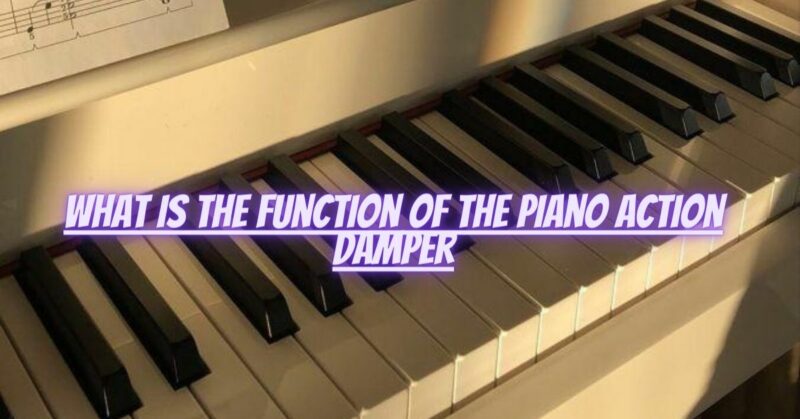The piano action damper is a critical component of the piano that plays a vital role in controlling the sound produced by the strings. It is responsible for stopping the vibration of the strings after the key is released, thereby silencing the sound and allowing for clear and distinct note separation. Let’s explore the function of the piano action damper in more detail:
1. Damping the Strings: When a pianist presses a key, the corresponding hammer strikes the strings, causing them to vibrate and produce sound. As the key is released, the piano action damper comes into play. The damper, also known as the damper felt or damper head, is a strip of felt located on the end of the damper lever. When the key is no longer depressed, the damper lever is activated, and the damper felt is brought into contact with the strings. The damper felt effectively mutes or dampens the strings’ vibration, silencing the sound.
2. Note Separation and Clarity: The action of the damper ensures that each note is cleanly separated from the next, contributing to the clarity and precision of the piano’s sound. Without the dampers, the strings would continue to vibrate, resulting in a blur of overlapping sounds and interfering with the individuality of each note.
3. Sustain Pedal Control: The piano’s sustain pedal, often referred to as the damper pedal, is used to lift all the dampers simultaneously, allowing the strings to sustain their vibrations even after the keys are released. This creates a rich and resonant sound. When the sustain pedal is depressed, the dampers are lifted away from the strings, and the strings continue to vibrate freely until the pedal is released.
4. Half-Pedaling (Selective Sustain): In pianos with advanced actions, such as grand pianos, the damper system allows for partial or selective sustain through half-pedaling. By partially depressing the sustain pedal, the pianist can control the level of sustain, allowing some notes to sustain while others are damped. This technique adds expressiveness and nuance to the piano’s sound.
5. Repetition Lever (Optional): In some piano actions, a repetition lever is used in conjunction with the damper system. The repetition lever lifts the dampers slightly off the strings when the key is only partially released, allowing for faster repetition of notes without the dampers fully stopping the vibrations.
In summary, the piano action damper is essential for controlling the sound produced by the piano strings. By damping the strings’ vibrations, it allows for clear note separation, sustain control, and half-pedaling techniques, all of which contribute to the expressive and versatile nature of the piano as a musical instrument. Proper maintenance and adjustment of the piano action dampers are essential to ensure the piano functions optimally and produces beautiful, resonant tones.


